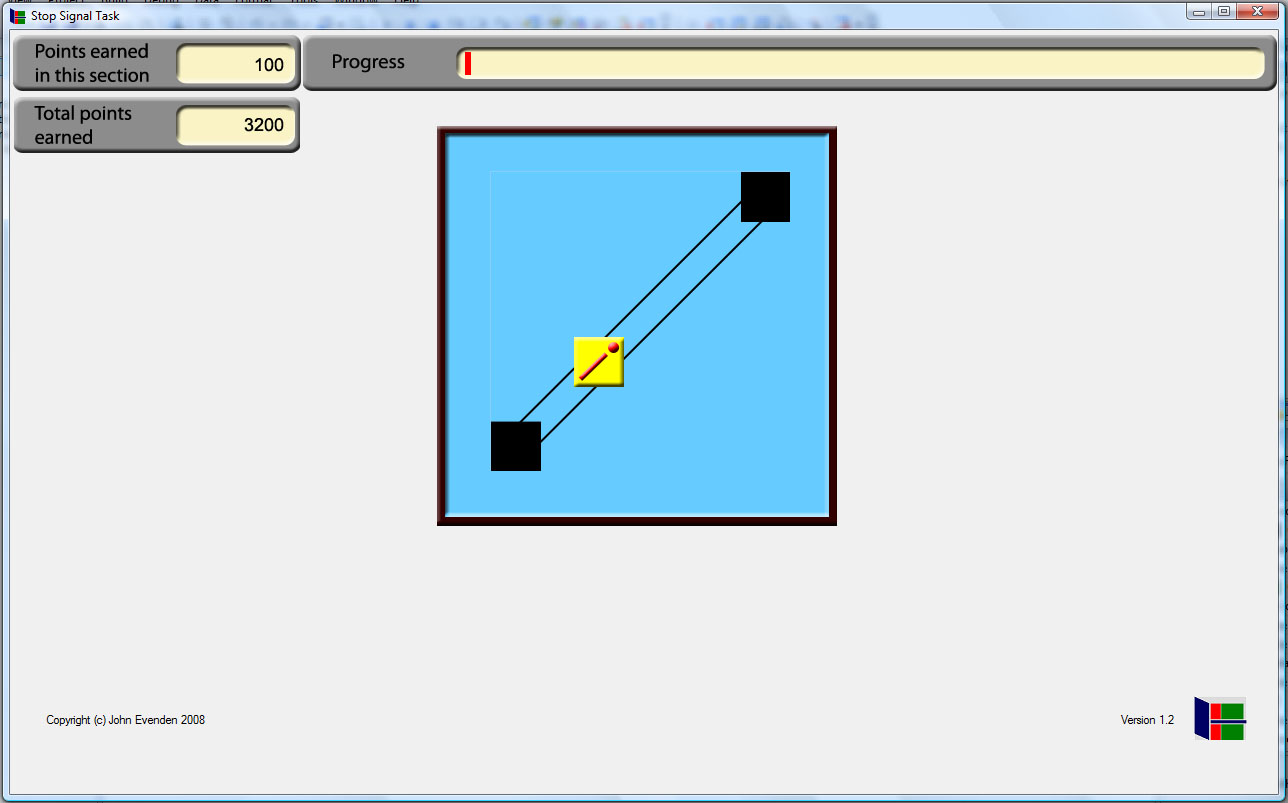One Choice Stop-Signal
In the stop-signal task, the subject is asked to respond as quickly as possible to a stimulus, the 'target'. On certain trials a second stimulus, the 'stop' signal, usually a sound, indicates that the subject should not respond. The time between the onset of the target and the stop signal can be varied, and the longer this interval, the more difficult it is for the subject to inhibit the response. In the WiltonLogic version of this task, we have chosen to make the task self-paced, and the definition of as quickly as possible explicit. When the subject presses the start button (not shown in this diagram), the yellow square starts to move across the screen for lower-left to upper right. The subject should touch somewhere in the blue area (not specifically on the yellow square) before it reaches the end of its trajectory. On 20% of trials a whistle blows, and the subject must then inhibit the response. As in the standard paradigm, the interval between the start of the trial and the whistle can vary. To prevent bias towards active responding, which is usually correct, the reward for successful inhibition is 5 times that for a correct response.
